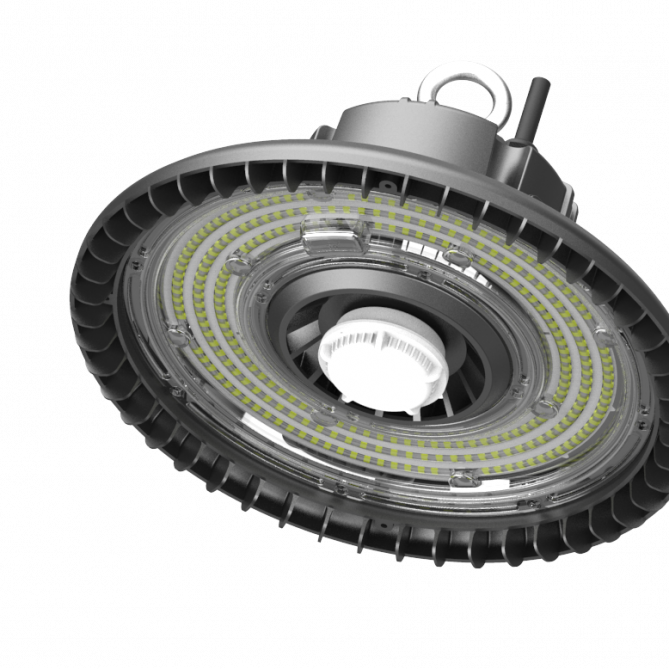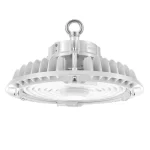Contents
- 1 Introduction to LED High Bay Lighting
- 2 Importance of Proper Lighting Spacing
- 3 Factors Influencing LED High Bay Lighting Spacing
- 4 Step-by-Step Guide to Calculating LED High Bay Lighting Spacing
- 5 Tools and Resources for Lighting Spacing Calculation
- 6 Common Mistakes to Avoid in High Bay Lighting Layout
- 7 Optimizing Energy Consumption with Correct Lighting Spacing
- 8 Case Studies: Successful LED High Bay Lighting Installations
Introduction to LED High Bay Lighting
Led high bay lighting spacing calculator! LED high bay lighting is essential in many large spaces. Think warehouses, gyms, or factories. These fixtures hang from high ceilings. They provide bright, wide-reaching illumination. This type of lighting must be reliable and efficient. It uses LED technology for several benefits. LED lights are energy-efficient and long-lasting. They also offer excellent light quality compared to traditional options.

Proper installation is key to LED high bay lighting performance. It includes calculating the right spacing between fixtures. Accurate spacing ensures uniform light distribution. It avoids dark spots and glare. It also improves safety and productivity in work environments.
The spacing calculation can be complex. But with a good , it’s easier. This tool considers all necessary factors. These factors might include ceiling height, the brightness of lamps, or the area’s use. With these inputs, the calculator can guide optimal layout planning.
In this blog, we will guide you through every step. We want to help you maximize your LED high bay lighting benefits. So, let’s dive into why proper lighting spacing is so important. And how you can achieve it for your own space.
Importance of Proper Lighting Spacing
Proper spacing between LED high bay lighting fixtures is critical. It ensures that the light spread covers the entire area without leaving dark spots. Well-spaced fixtures provide consistent illumination. This is vital for the safety of workers and the efficiency of operations. It prevents eye strain and improves visibility. This can lead to fewer accidents and better quality control in work processes.
Uniform light distribution also enhances the aesthetic appeal of a space. It creates an environment that is comfortable and inviting. This is important in customer-facing areas like retail stores and showrooms.
Furthermore, correct lighting spacing can save money over time. It reduces the number of fixtures needed. This lowers both initial installation costs and long-term electricity usage. When fixtures are too close, they can waste energy. When too far apart, they might require additional units to achieve desired lighting levels. Finding the right balance is key to energy efficiency.
To summarize, proper lighting spacing in LED high bay setups serves multiple purposes. It ensures safety, boosts productivity, appeals aesthetically, and promotes energy savings. Precise calculations using a are essential. They provide the best outcomes for any high bay lighting project.

Factors Influencing LED High Bay Lighting Spacing
Several factors affect how you space out your LED high bay lighting. These factors are crucial for achieving ideal lighting conditions.
Ceiling Height: The distance of the light from the floor impacts its spread. Higher ceilings may need lights that are closer together to avoid weak spots.
Luminaire Power: How strong your lights are will determine their spacing. More powerful lamps can be spaced farther apart while still providing good coverage.
Area of Application: What you’re using the space for influences lighting needs. A storage area might need less light than a detailed assembly line.
Reflectance of Surfaces: Light bounces off surfaces, affecting overall brightness. Bright and reflective surfaces might spread light further than darker ones.
Obstacles and Aisles: Physical barriers can block or shadow areas. Make sure to consider them in your layout to prevent dark zones.
Energy Efficiency Goals: If saving power is a priority, choose spacing that minimizes waste. Tighter spacing can lead to over-lit areas and higher bills.
All these aspects are vital to consider. They help ensure that your space gets uniform and efficient illumination. Remember to input these details when using your for accurate results.
Step-by-Step Guide to Calculating LED High Bay Lighting Spacing
Calculating the correct spacing for LED high bay lighting can seem tough. But with a clear guide, you can navigate the process with ease. Here are the steps you should follow:
1. Measure Ceiling Height: First, determine the height of your ceilings. This will impact the coverage of each light fixture.
2. Assess Luminaire Power: Check the power rating of your LED lights. Stronger lights cover a wider area and can be spaced further apart.
3. Define the Space Usage: Think about what the area is for. Different activities require different levels of lighting.
4. Examine Surface Reflectance: Look at the colors and materials in your space. Light surfaces reflect more, dark surfaces less.
5. Account for Obstacles: Note any barriers that could block light. Plan to place lights so that they avoid creating shadows.
6. Set Your Energy Goals: Decide how much energy efficiency matters to you. Use spacing to balance light quality with electricity savings.
7. Use a Calculator: Enter all this information into a . It will suggest the optimal spacing for your lights.
8. Sketch Your Layout: With the calculator’s guidance, draw a layout. This will give a visual of where each light should go.
9. Adjust as Needed: Test your plan and make tweaks. Aim for an even spread of light throughout the space.
Following these steps will help you get uniform, efficient lighting. A is a must. It makes sure that all essential factors are in the equation. Keep these steps in mind to enhance safety and reduce costs in your lighting project.
Tools and Resources for Lighting Spacing Calculation
When tackling LED high bay lighting spacing, having the right tools is crucial. A stands out as the primary resource. This digital tool simplifies the computation of optimal fixture placement. It takes in specific space parameters and outputs the best layout.
Here are some resources you may find useful for your calculation needs:
- Online Spacing Calculators: Many lighting manufacturers provide calculators on their websites. You enter details like ceiling height and fixture power. The calculator then recommends spacing.
- Mobile Apps: There are also apps that you can download on your phone or tablet. They often come with added features, like saving your calculations or offering visual layouts.
- Software Programs: For a more comprehensive approach, specialized lighting design software might be helpful. These programs can manage more complex spaces and provide 3D visualizations.
- Consultation with Professionals: Sometimes, it’s best to get expert advice. Lighting consultants can offer tailored recommendations. They can account for factors that calculators might miss.
- Instructional Guides: Some calculators come with guides. They help users understand the inputs and interpret the results effectively. These guides can be crucial for someone new to lighting design.
- Supplier Documentation: The LED fixtures’ suppliers might provide documentation. This can help you understand the specific characteristics of their products. This knowledge is vital for accurate spacing calculations.
Each of these resources is designed to assist with proper LED lighting spacing. They can help ensure the efficiency, performance, and cost-effectiveness of your lighting installation. Opt for the tool that best suits your skill level and the complexity of your project. And remember to double-check the recommended spacing with physical measurements in your space.

Common Mistakes to Avoid in High Bay Lighting Layout
When planning an LED high bay lighting layout, some common mistakes can lead to poor illumination. Avoid these pitfalls to ensure a successful lighting setup.
Ignoring SPacing Calculations: It’s tempting to guess fixture spacing. This often results in uneven lighting. Always use a for precision.
Neglecting Obstacle Placement: Failing to consider obstacles can cause shadows. Check your layout for any potential light blockages.
Overlooking Ceiling Height: Higher ceilings require careful calculation. Lights placed too far apart might not provide enough coverage.
Using Inconsistent Fixture Types: Don’t mix different types of fixtures. This can lead to varied lighting levels and inefficiency.
Forgetting to Adjust for Reflectivity: Remember, light surfaces reflect. Dark surfaces absorb. Adjust your spacing to account for this effect.
Over-lighting an Area: Too many fixtures close together waste energy. It leads to increased costs without improving lighting quality.
By avoiding these errors, your high bay lighting layout will be more effective. Your space will be well-lit, safe, and energy-efficient.
Optimizing Energy Consumption with Correct Lighting Spacing
Optimal spacing of LED high bay lighting isn’t just about good illumination. It’s also about reducing energy consumption. Achieving an energy-efficient lighting design means balancing brightness with power use. Here’s how you can optimize energy use with proper fixture spacing.
Evaluate Your Lighting Needs: Start by assessing how much light your space truly needs. Over-lighting can waste electricity. A well-calculated plan ensures you don’t install more fixtures than necessary, leveraging energy savings.
Select Energy-Efficient Lamps: Choose LED lamps that offer high luminosity with low power draw. This can lower energy usage without compromising on light quality.
Consider Dimmable Solutions: Dimmable LED high bay lights can adjust to the needed brightness, reducing power when full brightness isn’t required. This adaptability can lead to significant energy savings.
Implement Lighting Controls: Systems like motion sensors or timers help by turning lights off when not needed. These controls prevent energy waste in unoccupied areas.
Regular Maintenance: Clean fixtures and lamps to maintain brightness. Dirt and dust can reduce illumination, causing the need for more lights and increased energy use.
By ensuring correct spacing, you can minimize the number of fixtures and their power consumption. This not only optimizes energy use but also reduces your carbon footprint. Adjusting the spacing of your LED high bay lighting as part of your sustainable business practices can have a powerful impact. The up-front investment in planning and proper tools like a will pay off in the long term with lower electricity bills and a greener operation.
Case Studies: Successful LED High Bay Lighting Installations
In the world of industrial and commercial lighting, seeing is believing. To understand the benefits of correct LED high bay lighting spacing, let’s look at real-world examples. These case studies demonstrate the importance of accurate spacing calculations.
Warehouse Upgrade
In one warehouse, they replaced old fixtures with LED high bay lights. They used a . The outcome was fewer fixtures that gave better light. This change resulted in a 60% cut in energy use. Workers said the new lighting made their tasks easier and safer.
Sports Complex Illumination
A large sports complex faced poor lighting issues. After a careful study, they spaced their new LED lights as the calculator suggested. The result was a vibrant, evenly-lit area. This enhanced the experience for both athletes and spectators.
Retail Store Transformation
A retail store used the calculator to redesign their lighting. The perfect spacing increased the appeal of their products. Sales figures went up. Customers spent more time shopping due to the inviting atmosphere.
Manufacturing Facility
A manufacturing facility dealing with intricate assembly tasks needed precise lighting. Correct LED spacing ensured all areas were well-lit. This lead to fewer errors and increased productivity.
These success stories highlight that using a is key. It helps achieve efficient, cost-effective, and safe lighting installations across various settings.


